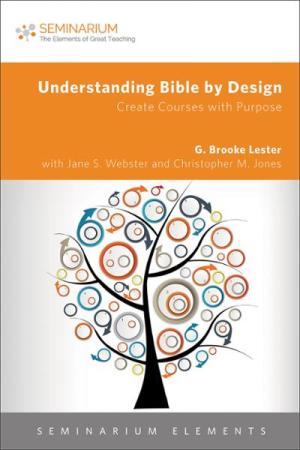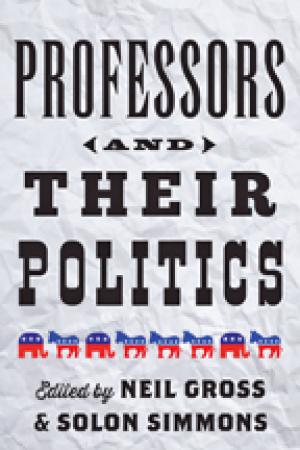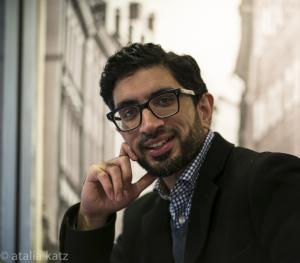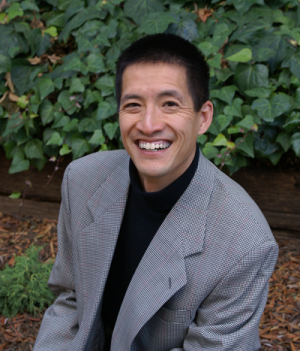Resources
[row] [column lg="9" md="9" sm="6" xs="12" ] The Wabash Center's international peer reviewed journal is published quarterly, in January, April, July, and October, by Wiley-Blackwell. Online and print subscriptions. Read more about the journal. [/column] [column lg="3" md="3" sm="6" xs="12" ] [/column] [/row]

Theological school deans are not just theological leaders for their institution, they must be EDUCATIONAL leaders. That is, they must implement sound educational practices related to curriculum, instruction, supervision, assessment, and administration. There is a variety of ways to assess...

Eren Tasar Assistant Professor University of North Carolina at Chapel Hill I remember how dumbfounded I was the first time a student told me he had grown up believing Catholics were not Christian. He had never, moreover, heard of the Orthodox Church, the only form of Christianity recognized by most

Nancy Lynne Westfield Associate Professor of Religious Education Drew Theological School So central to my identity is teaching that when I think of the highest honor, the highest appreciation – I think of my gratitude for those who have liberated me through their teaching. I aspire, then, to instill in

Lester, Webster, and Jones came together from different academic contexts to create a practical, succinct resource for professors on course design. Lester and his co-authors set out to demonstrate how the principles of Grant Wiggins and Jay McTighe’s 2005 updated Understanding by Design (UbD) model can be applied to theological or religious disciplines in higher education. UbD is a method for designing courses that intentionally fulfill the instructor’s stated course goals from day one. UbD is a learner-centered approach intended to focus on the macro-level objectives of the course. UbD seeks to generate courses where each class is connected clearly with the objectives. Lester finds that UbD works best for course units or individual lessons in his Master’s level courses on the Bible. He provides helpful examples of how he applies the concepts of UbD to his teaching approach or assessment of assignments. While Lester uses the model’s “essential questions” to structure course units, the other authors show how UbD could apply to an entire course. For teachers of undergraduates, Webster’s chapter is very insightful. She provides in-depth examples of the types of assignments she assigns, exam questions and “metaquestions” utilized throughout the course. For her New Testament course, Webster assigns sixteen one- to two-page papers that build on each other and advance students’ writing skills. This is an ideal assignment for any instructor, but it must be noted that all three authors have teaching loads lighter than a typical small liberal arts college faculty member’s teaching load of 4/4 or 4/3. Nevertheless, such assignments constitute a helpful resource for all higher education teachers. The final chapter demonstrates how the principles applied by Lester and Webster aid in developing non-biblical courses. Here Jones writes about his successes and failures as he developed his courses on Rituals and Early Judaism for the first time. The benefit of this chapter is the honest analysis of how he set up his course and his own reflections on the results, including pitfalls for new followers of the UbD model and thoughts on the unique pressures of teaching at a college or university for the first time. The chapter on creating an online course is less effective because half of the chapter is a general defense of online teaching. The other half of the chapter lacks the type of precision one finds in the other chapters since it does not include a specific course as an example. This small volume is a great resource and quick reference for graduate students, new professors, and professors who have had little guidance on teaching. Each author introduces the concepts of Understanding by Design in a succinct and accessible manner that moves smoothly through the thought process of implementing it. For anyone who has been teaching for a longer period of time, the book could be a good resource for modifying current courses. While the work is geared toward courses on the Bible, the concepts can be transferred effortlessly to nearly any other theological discipline.

This edited volume addresses the common assumption that professors have overwhelmingly liberal or radical political views and that they have significant biases against conservative thought. Grounded in both quantitative and qualitative research, the editors suggest that the common stereotype of academic culture as hostile to political worldviews that do not fall on the leftwing of a continuum does not stand up to the scrutiny of data. Instead, their eleven chapter, method-rich book reveals the political and social thought of most individual members of the academy is, indeed, typically progressive, but that the effect of these individual worldviews on the collective environment of higher education is more nuanced. Moreover, the standard notion that so-called liberal professors discriminate against conservatives because they are conservatives does not emerge from the results of any of the contributors’ work. The backdrop for much of the book is an agreement on the part of the editors that American higher education is in crisis. This crisis involves many factors, including finances. Colleges and universities are feeling the effects of a constricting economy. Competition for students is fierce. The need for revenue is great and institutional endowments are shrinking. That some attribute the crisis in higher education to the social thought of the educators in higher education motivated this study to examine the precise nature of higher education’s social worldview. The volume’s primary orientation is the sociology of higher education and includes the sociology of intellectuals. A unifying observation is that the professoriate, as well as other elements of the academy, possesses a progressive political worldview. This worldview grows from a number of factors, including but not limited to the social class of those who enter professions in higher education. The current orientation of the academy toward progressive politics is not new and studies of it are not new, either. Gross and Simmons provide a brief survey of literature exploring the history of political and social views of academics, noting the significant presence of higher education professionals who worked in New Deal related positions in addition to their work in colleges and universities. Their book, focused on the current state of affairs, explores higher education since 2006. Professors and their Politics has value for all professionals associated with American higher education. The various studies in the book make a case for why progressive values are dominant among those who enter vocations associated with colleges and universities, as well as how these values shape research agendas, hiring practices, and treatment of students. If their conclusions are correct, and the various authors have provided data to support verifiable conclusions, the political life of the academy is a sign of its vitality, not a cause of its crisis, and the vitality of the academy includes more support for diversity of thought, especially among students, than common stereotypes assume. This volume makes an important contribution to understanding the culture of contemporary higher education.

Youshaa Patel Assistant Professor of Religious Studies Lafayette College Every translation is an interpretation. This statement is especially true with regard to the Quran, since, according to Muslims, a translation of the Quran is not the actual Quran - just one interpretation among many. The Arabic Quran contains the actual.

Cláudio Carvalhaes Associate Professor McCormick Theological Seminary One of the joys of teaching is to teach with somebody else. In my years of teaching, I have had many great experiences and I cherish each one of them very much. In past blogs I said that to teach is to create

Caleb Elfenbein Assistant Professor Grinnell College More often than not, it seems, students register for courses on Islam wanting to learn “stuff.” In a moment when the ubiquity of Islam in public consciousness is matched by general illiteracy about its history and diverse forms, these expectations are tempting. Yet if.

Tat-siong Benny Liew Class of 1956 Professor in New Testament Studies College of the Holy Cross Recent studies suggest that African American students, despite the opportunity to attend college, tend not to major in disciplines that are linked to a high income generating future, such as a STEM field; instead,.
Wabash Center Staff Contact
Sarah Farmer, Ph.D
Associate Director
Wabash Center
farmers@wabash.edu